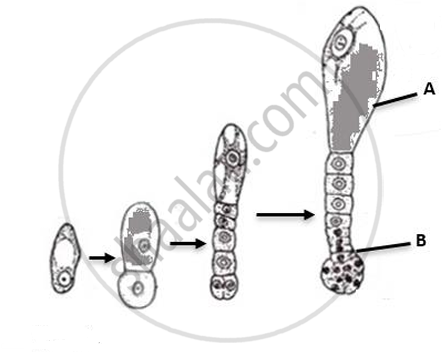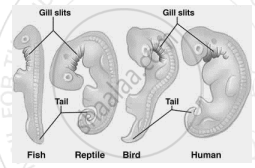Advertisements
Advertisements
प्रश्न
During the reproductive cycle of a human female, when, where and how does a placenta develop? What is the function of placenta during pregnancy and embryo development?
उत्तर
During the reproductive cycle of human female, placenta develops after the implantation of zygote in the uterus.
1) Nutrition : It helps to transport nutrients from mother's blood to foetus for its development.
2) Respiration: It provides oxygen to the foetus and take CO2 away from the foetus.
3) Excretion: It helps in the removal of waste products from the foetus and transfers them to mother's blood.
4) Immunity: It provides immunity to the foetus. Antibodies developed in mother's blood passes onto the foetus through the placenta.
5) Storage: It stores some fats, glycogen and iron.
6) Secretion of hormones: It secretes many hormones like oestrogen, progesterone, gonadotropin and placental lactogen.
APPEARS IN
संबंधित प्रश्न
State the Function of Chorionic Villi
Eye lens is formed from ______.
The first movements of the foetus and appearance of hair on its head are usually observed during which month of pregnancy?
Relaxin is the hormone secreted by the placenta.
Which of the following statements are correct with respect to hormones secreted by the placenta?
- The placenta secretes relaxin during the later stage of pregnancy.
- The placenta secretes a high amount of FSH during pregnancy.
- The placenta secretes relaxin during the initial stage of pregnancy.
- The placenta secretes hCG and hPL during pregnancy.
Read the following and answer from given below:
Cleavage is the series of rapid mitotic divisions in the zygote and forms blastula. The 2, 4, 8, 16 daughter cells are called blastomeres. An embryo with 64 blastomeres is known as a blastocyst and has a blastocoel cavity. Blastocyst gets implanted in the uterine wall and leads to preganancy.
The solid mass of cells with 16 blastomeres is called ______
Read the following and answer from given below:
Cleavage is the series of rapid mitotic divisions in the zygote and forms blastula. The 2, 4, 8, 16 daughter cells are called blastomeres. An embryo with 64 blastomeres is known as a blastocyst and has a blastocoel cavity. Blastocyst gets implanted in the uterine wall and leads to pregnancy.
At which stage of embryonic development does trophectoderm develop?
The diagram given below represents a specific stage of human embryonic development. Identify the stage.

During embryogenesis in dicots, the zygote divides into a basal cell and a terminal cell. The basal cell divides repeatedly to produce a structure called suspensor. Carefully observe the image given below and describe the function of cell – A and cell – B of the suspensor.

Zygote
The diagram given below shows the early embryonic stages of fish, reptiles, birds and humans. Though adult reptiles, birds and mammals breathe air, their embryos possess gills. How does this fact support evolution?

